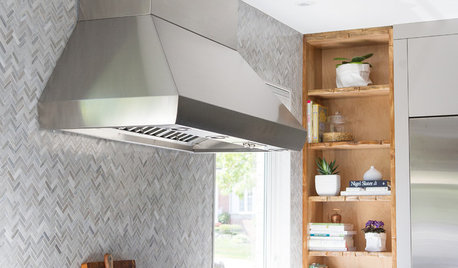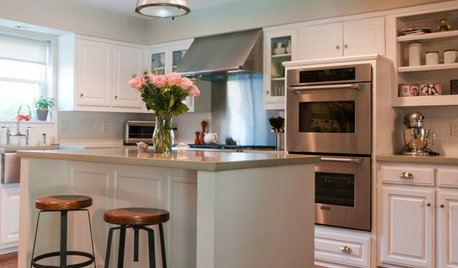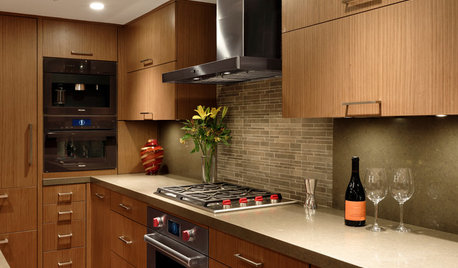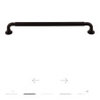kitchenaid 600 cfm vent hood but 108k btu rating??
mpasquar
11 years ago
Related Stories

KITCHEN DESIGNA Cook’s 6 Tips for Buying Kitchen Appliances
An avid home chef answers tricky questions about choosing the right oven, stovetop, vent hood and more
Full Story
KITCHEN DESIGNHow to Choose the Right Hood Fan for Your Kitchen
Keep your kitchen clean and your home's air fresh by understanding all the options for ventilating via a hood fan
Full Story
KITCHEN DESIGNWhat to Know When Choosing a Range Hood
Find out the types of kitchen range hoods available and the options for customized units
Full Story
KITCHEN APPLIANCESLove to Cook? You Need a Fan. Find the Right Kind for You
Don't send budget dollars up in smoke when you need new kitchen ventilation. Here are 9 top types to consider
Full Story
KITCHEN DESIGNHow to Find the Right Range for Your Kitchen
Range style is mostly a matter of personal taste. This full course of possibilities can help you find the right appliance to match yours
Full Story
KITCHEN DESIGN16 Practical Ideas to Borrow From Professional Kitchens
Restaurant kitchens are designed to function efficiently and safely. Why not adopt some of their tricks in your own home?
Full Story
KITCHEN DESIGNKitchen of the Week: Function and Flow Come First
A designer helps a passionate cook and her family plan out every detail for cooking, storage and gathering
Full Story
KITCHEN DESIGNShow Us Your Fabulous DIY Kitchen
Did you do a great job when you did it yourself? We want to see and hear about it
Full Story
MATERIALSInsulation Basics: What to Know About Spray Foam
Learn what exactly spray foam is, the pros and cons of using it and why you shouldn’t mess around with installation
Full Story
SMALL KITCHENSThe 100-Square-Foot Kitchen: Fully Loaded, No Clutter
This compact condo kitchen fits in modern appliances, a walk-in pantry, and plenty of storage and countertop space
Full StoryMore Discussions







will2kz
jwvideo
Related Professionals
College Park Kitchen & Bathroom Designers · Commerce City Kitchen & Bathroom Designers · East Peoria Kitchen & Bathroom Designers · Leicester Kitchen & Bathroom Designers · Sun City Kitchen & Bathroom Designers · Verona Kitchen & Bathroom Designers · White House Kitchen & Bathroom Designers · Emeryville Kitchen & Bathroom Remodelers · Gilbert Kitchen & Bathroom Remodelers · Key Biscayne Kitchen & Bathroom Remodelers · South Lake Tahoe Kitchen & Bathroom Remodelers · Walnut Creek Kitchen & Bathroom Remodelers · Cave Spring Kitchen & Bathroom Remodelers · Buena Park Cabinets & Cabinetry · North Bay Shore Cabinets & Cabinetry